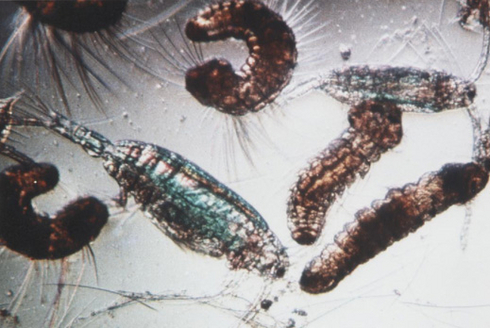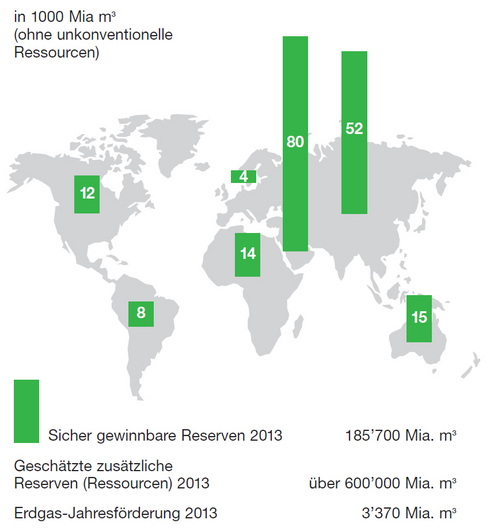Main Content
Formation from plankton and algae

The natural gas that we use today comes from organic substances, formed where crude oil or coal deposits originated. The initial material consisted of the remains of dead plankton and algae in flat primordial oceans which sank to the ocean bed. Here, the plankton and algae fermented into digested sludge, broken down by bacteria. Petroleum source rock was formed from the deposits of fine-grained mainland rock waste consisting of clay, sand and chalk. The organic material that the rock contained was converted into a firm, crude oil-like substance – bitumen. As the sea bed continued to sink and the source rock became increasingly covered in fresh sediment, the bitumen transformed into liquid and gaseous fluorocarbons as a result of the increasing pressure and rising temperatures. This first produced a heavy oil, which then became a light oil before finally transforming into natural gas wherever pressure and temperatures were high enough. This natural gas is widely spread in reservoirs containing rich fluorocarbon deposits.
Also from plants
In the carbon age 350 to 299 million years ago, the climate was ideal for plants to flourish. Dead plants formed thick peat layers in vast bogs, providing perfect conditions for converting dead plants into coal. As the ground sank rapidly, the plant material descended into lower layers of the earth, where it successively degraded first into peat, then brown coal, bituminous coal and finally anthracite during what is known as the carbonisation process. During carbonisation, the plant material decomposes into gaseous reaction products, especially methane. Natural gas deposits produced during coal formation can be found in fields in the Netherlands and in the southern North Sea, for example.
Formation of deposits
The weight of the overlying layers compressed the source rock increasingly closer together, causing it to sink lower and lower. Crude oil and/or natural gas is pushed out during this process. Due to their low specific weight and surface tension, crude oil and natural gas ascended through cracks and hollows in higher, porous rock layers. This rise came to a halt where porous rock was covered by impervious cap layers, formed by material such as clay. However, larger accumulations of natural gas were only able to form where such cap layers enclosed a sufficiently voluminous layer of reservoir rock – sandstone, dolomite or fissured chalk – from above, thus forming what is known as a trap.

